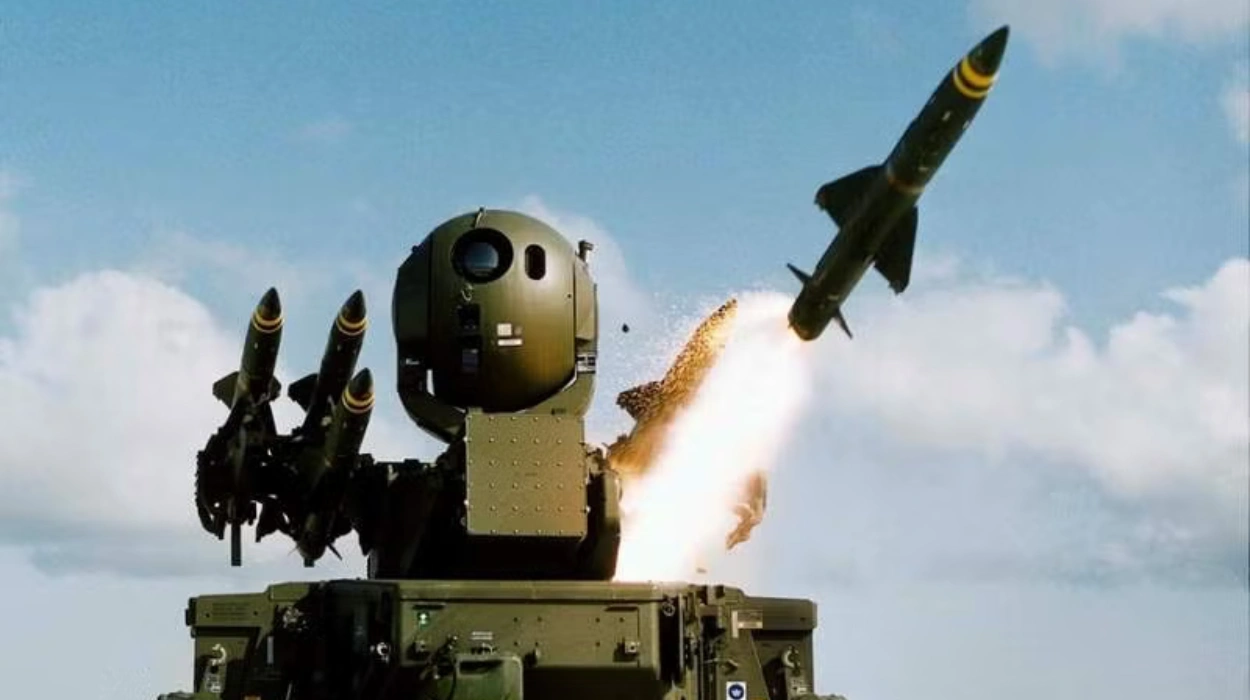The situation in Ukraine and recent Iranian missile attacks against Israel have put the value of air and missile defence capacities into perspective as the domain that ensures the security of national territory. The approach to air and missile defence is multi-layered in the UK, whose defence strategy secures the homeland whatever the threats are through a combination of national resources and international partnerships.
UK Air and Missile Defence Structure
The UK air and missile defence policy is rooted on its membership of the Integrated Air and Missile Defence (NATO IAMD) by the armies of NATO. However, in addition to NATO obligations, the UK continues to exercise its own mobile air defence to be deployed at short notice should the mainland be threatened. It has at its disposal an elaborate network of early warning radars, part of the NATO defence system as well as the US missile defence system.
The Royal Air Force’s Quick Reaction Alert
The Royal Air Force (RAF) provides airspace protection to the UK and has established a Quick Reaction Alert (QRA) force which is aimed to tackle the threats in the air. Aircraft crews and their Typhoon aircraft are stationed at RAF Lossiemouth and RAF Coningsby and maintained on a state of continuous readiness should any aircraft decide to create a threat to the UK. In addition to national defence, the UK contributes to the NATO air policing mission in Eastern Europe and thereby commits itself to the allied collective security.
Sky Sabre: The Army’s Mobile Air Defence
In 2021, the British Army put the Sky Sabre system into service: a medium-range air defence system based on the ground, but mobile. It can target fighter jets, attack helicopters, drones and laser- guided smart munitions. Sky Sabre was already deployed in the Falklands when it was also deployed to Poland to strengthen the NATO front eastern side due to increasing concerns of the tension in the region.
The Royal Navy’s Type 45 Destroyer
The Royal Navy brings air defence through the Type 45 destroyer whose primary task is to protect the navy against aerial threats. It is also armed with Sea Viper and Sea Ceptor missile systems that make it capable of deployment in UK Territorial Waters to assist in mainland defence. Despite this potential ballistic missile defence capability, its capabilities are limited in this regard thanks to the fact that it only has six vessels, as well as, the range of its radar.
Land Ground Based Air Defence (LGBAD) Programme
The long-term programme is the long-range Land GBAD programme, unveiled in August 2022 by the Ministry of Defence that aims to establish a fully integrated air defence system able to operate within the fields of air domain, sea domain and land domain. It will take into account defence requirements of the UK mainland during the next decade but it is not an entire anti-ballistic missile shield.
Research and Development Efforts
The UK is also planning ahead and researching future capabilities to respond to hypersonic missile threats as well as making directed energy weapons including laser-based defences. All this is under the Defence Science and Technology Laboratory (DSTL) and UK Missile Defence Centre (MDC). Further counter-hypersonic projects are also regarded by pillar two of the AUKUS agreement between the United States and Australia.
NATO Integrated Air and Missile Defence
Being a member of NATO the UK belongs to the NATO IAMD, a standing mission to defend the territory, population and armies of NATO member states. This system combines the national and NATO resources together such as sensors, early warning radars and weapon systems into a unified system of defence.
During peacetime it participates in the NATO Air Policing in order to protect the airspace of allies.
NATO Ballistic Missile Defence (BMD) is an entirely defensive gesture in order to assist the member states of the missile threat.
In times of crisis, NATO IAMD becomes a critical part of NATO’s rapid response capability.
The Diamond Initiative and Long-Range Strike Development
In October 2024, the UK launched the Diamond Initiative working together with its NATO partner countries to strengthen the incorporation of missile defence into NATO. The UK is also involved in the European long-range strike approach programme that aims at developing sophisticated long-range missiles to defend collectively.
European Sky Shield Initiative (ESSI)
In 2022 Germany started the European Sky Shield Initiative (ESSI) which is an attempt to enhance European integrated air defence by combining procurement of air defence systems. UK signed a Letter of Intent to join during 2022 and the Ministry of Defence has noted that although no plans exist yet to buy systems through ESSI, UK is investigating the opportunities to collaborate with hopes of increased Sky Sabre and Land GBAD programme.
As of October 23, 2023, the program had two hundred and one European countries sign up, with twenty-one European countries outside the NATO joining the program, demonstrating its attraction to the non-NATO European nations.
Strategic Defence Review and Future Outlook
The UK is due to gain a Strategic Defence Review that will make integrated air and missile defence a priority case. In its September 2024 report, the House of Lords, International Relations and Defence Committee, called on the government to make homeland defence a priority and renew its efforts with European NATO allies to build up readiness to meet new threats


